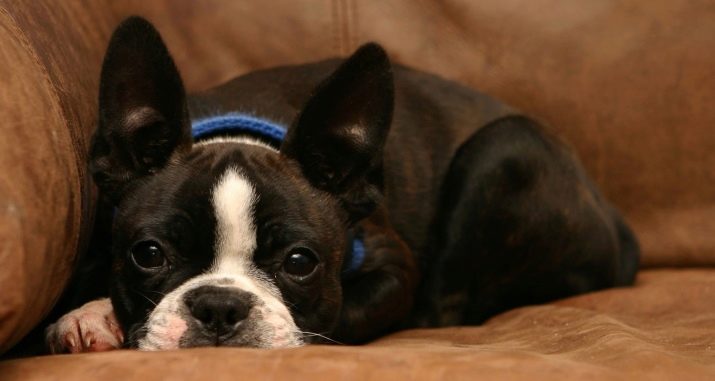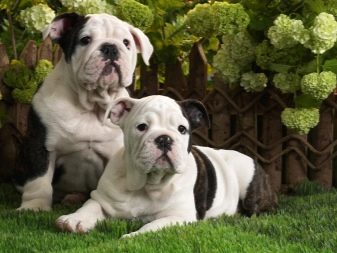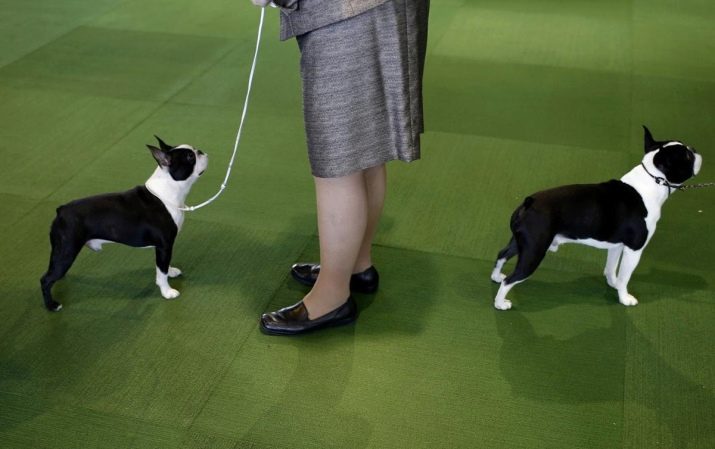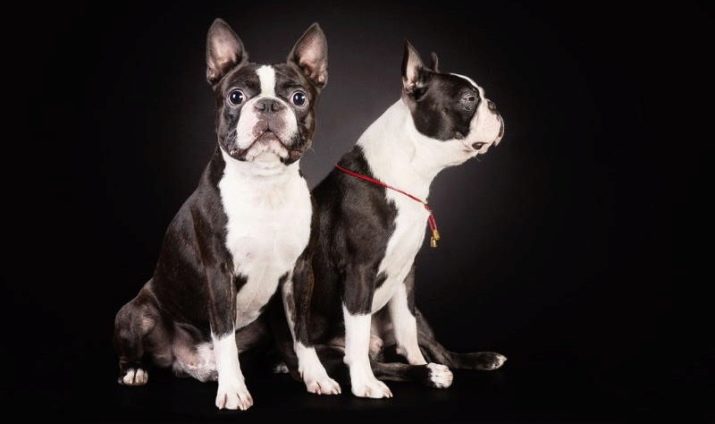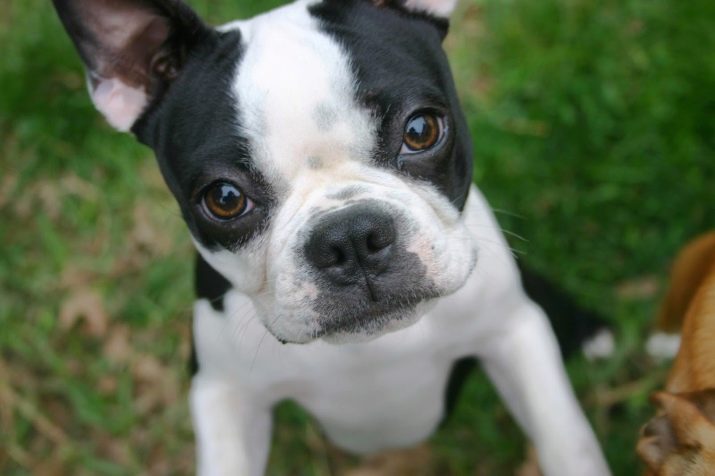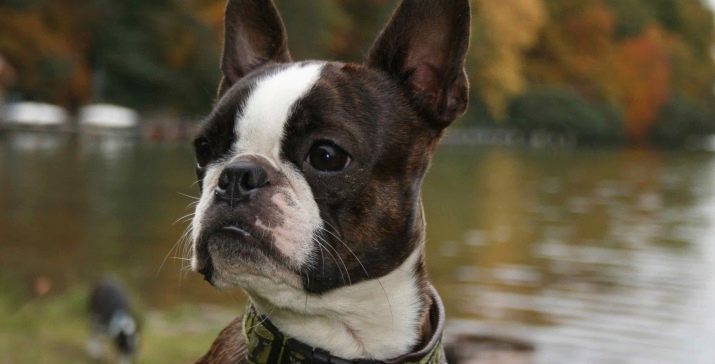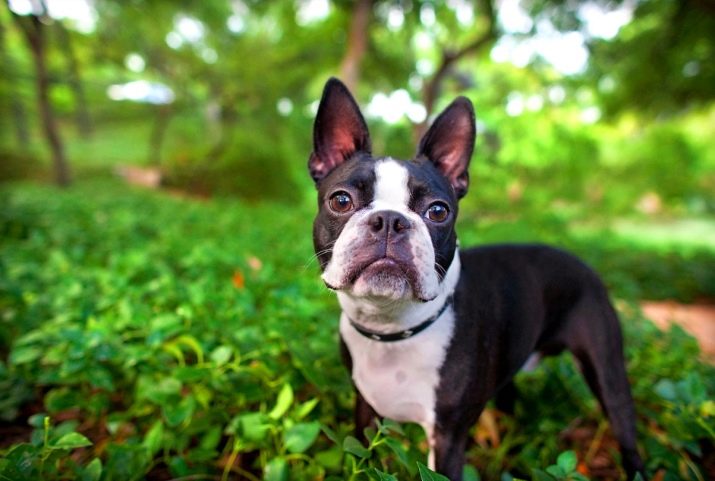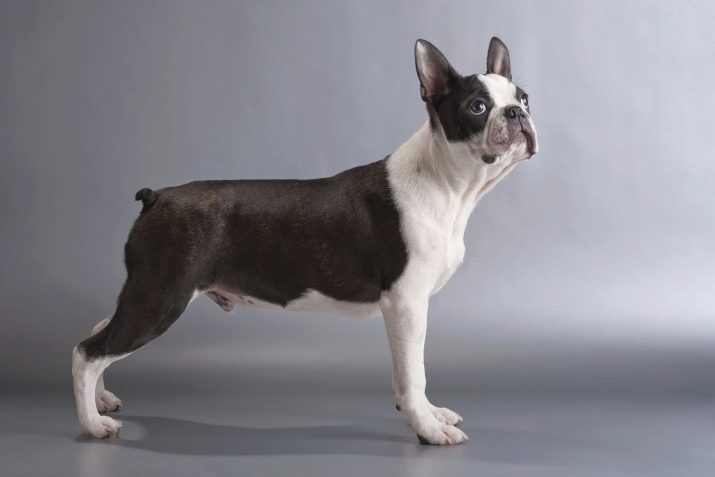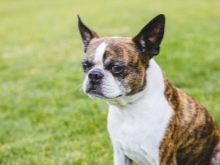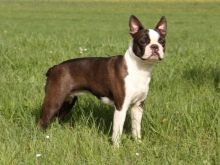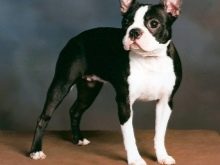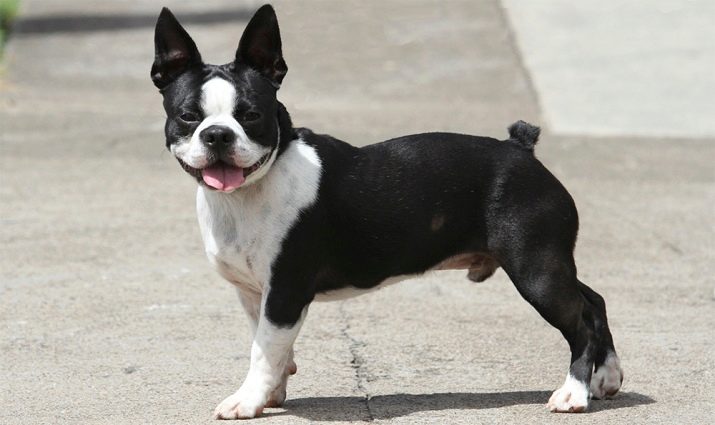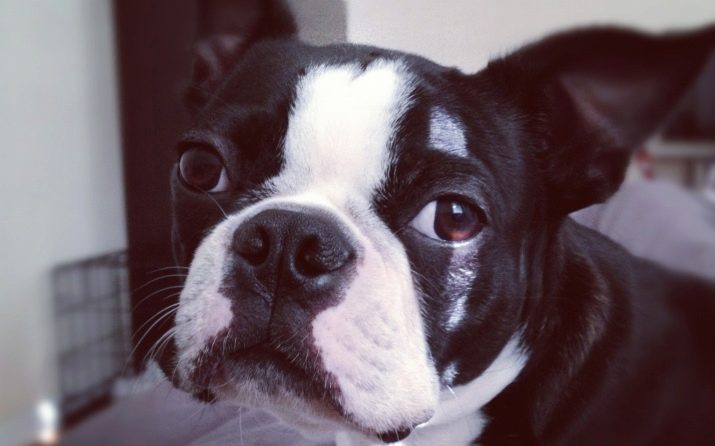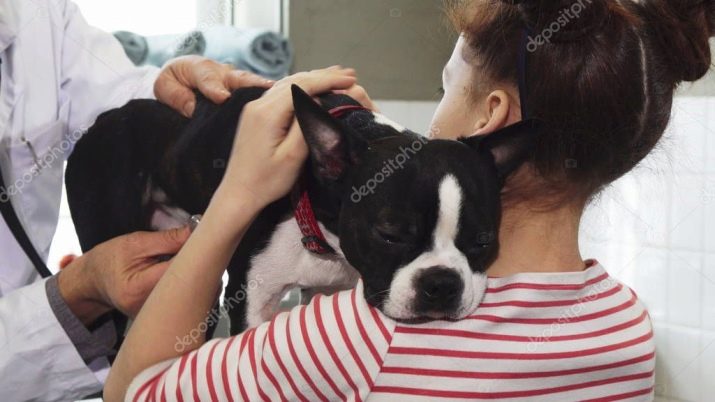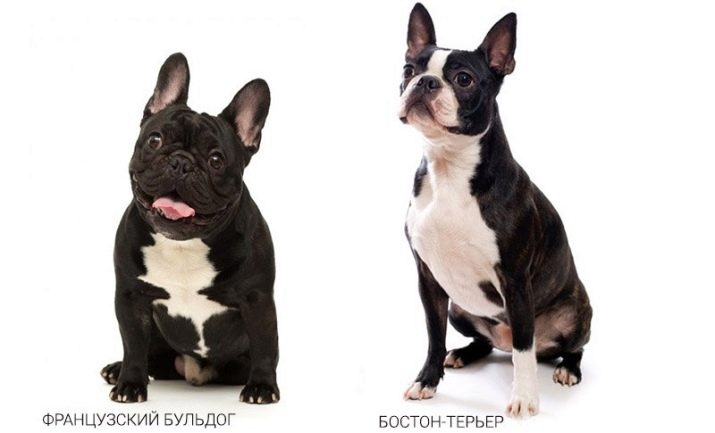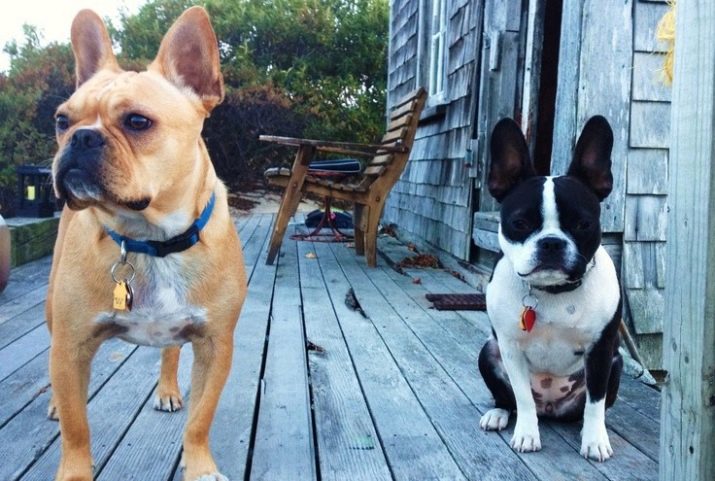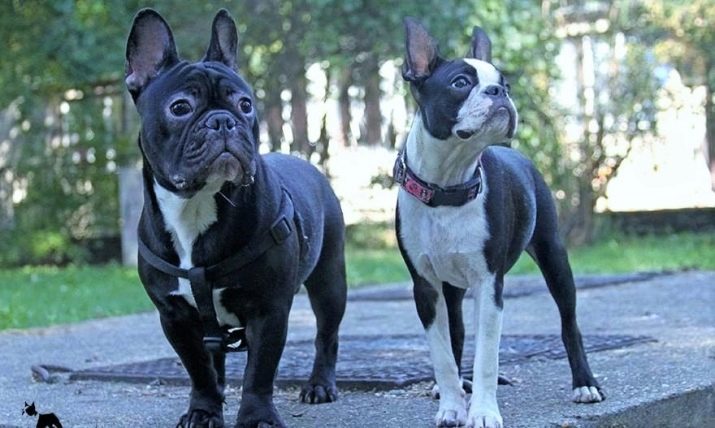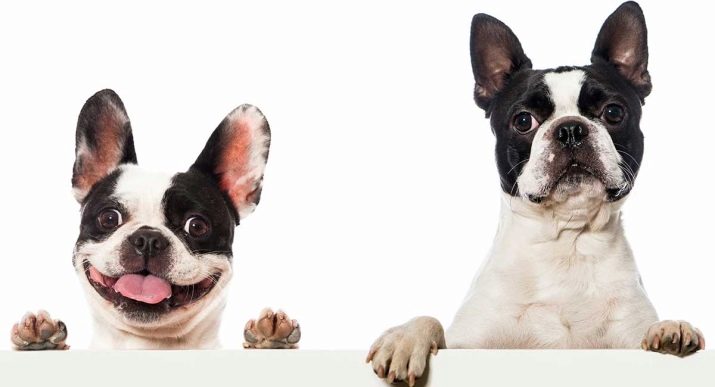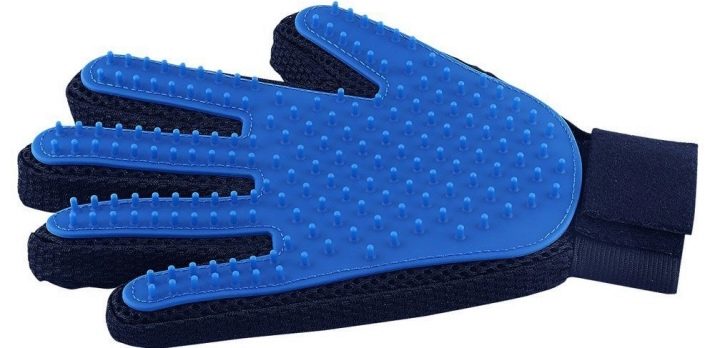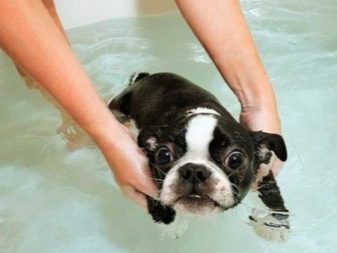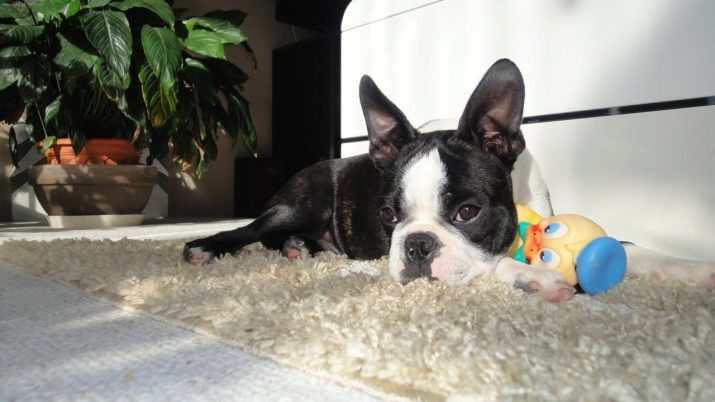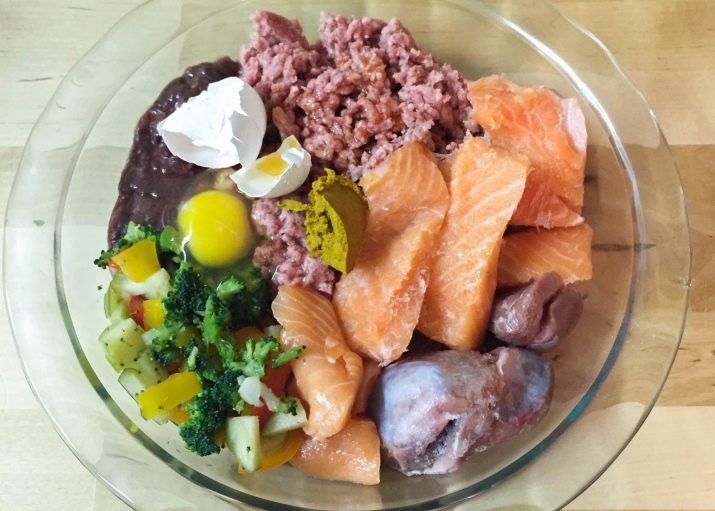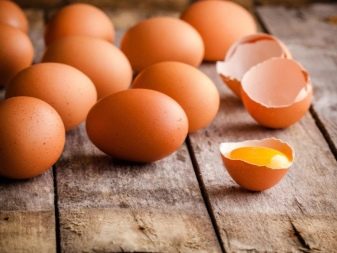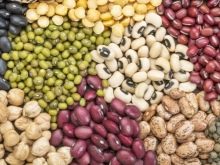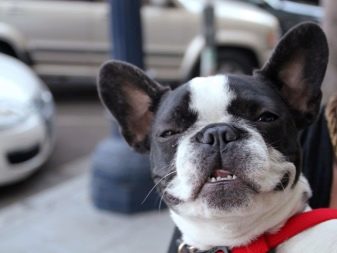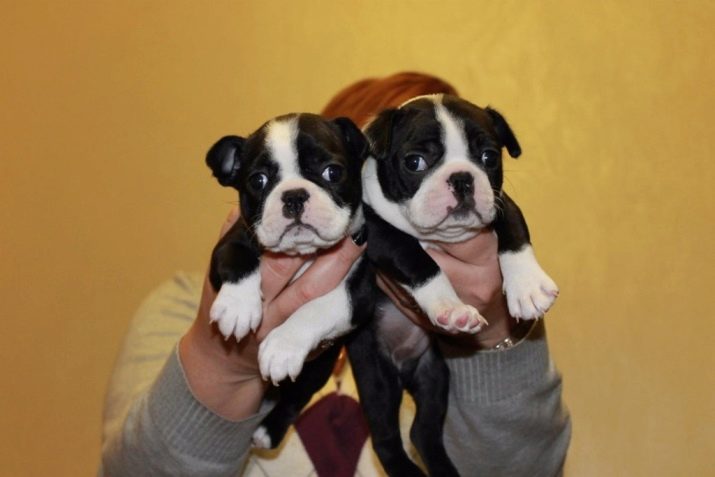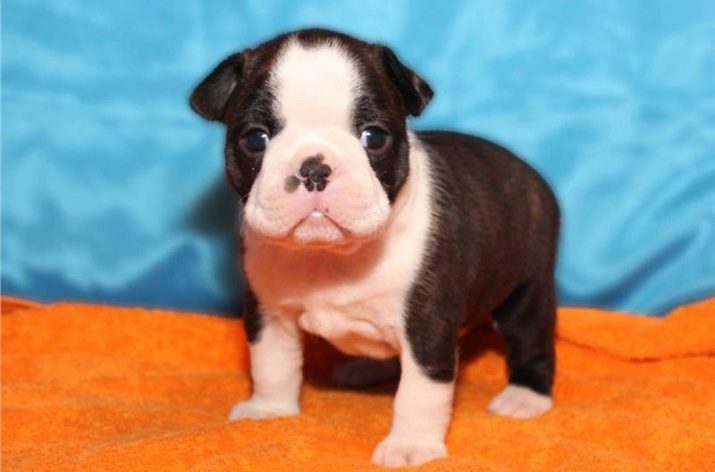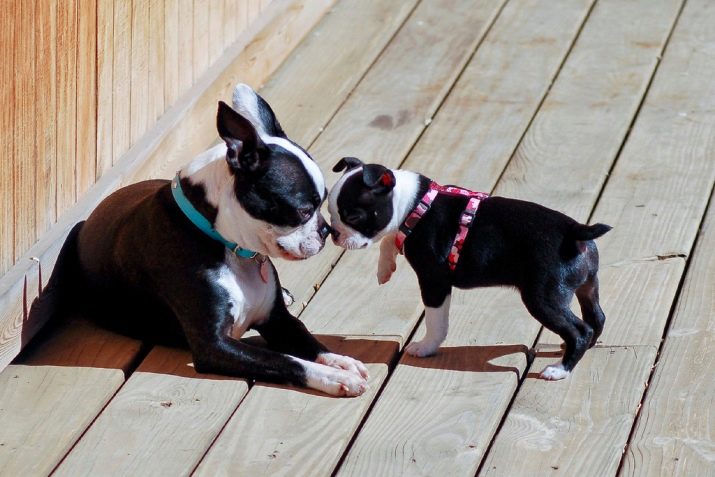The Boston Terrier is a dog that has won the hearts of millions of dog lovers. Representatives of the breed are notable for their keen intelligence, companionship, and incredible devotion to their master.
History of origin
The first work on the breeding of this breed began in 1861. Breeders from the United States tried to cross the English Terrier and the English Bulldog. It is worth noting that in those days the bulldogs looked somewhat different - the body of the dog was quite strong and muscular, and its paws were short.
The English terriers who did not live to this day had wide breasts and very strong legs. A particularly popular breed was hunters.
The first show of the Boston Terrier breed occurred back in 1878 at the Boston Dog Show. The competition was attended by several representatives of this breed, which was then called the bullet head or the boules-and-terrier.
After some time, when the breeders fully decided on the basic standards of the Boston Terrier, the breed was officially recognized. Now these dogs are very popular not only in England, but also in other countries.
Description
This breed of dog, like the Boston Terrier, can be recognized by its unusual physique - a very muscular body with short legs. Such an interesting structure of the dog's body does not prevent it from being extremely active and energetic.
At international exhibitions, the Boston Terrier is evaluated primarily on the proportionality of the body, as well as on the pattern on the wool.
It is not difficult to distinguish a male from a female - they differ significantly from each other in size and weight. The growth of an adult Boston terrier is always equal to the length of the back, but the weight is divided into three types: small - no more than 7 kilograms, average - from 7 to 9 kilograms and large - from 9 to 12 kilograms.
The main standards derived by breeders are several characteristics.
- The shape and size of the head. The head of the Boston Terrier must be square in shape with skin covered and not hanging anywhere. Such a dog usually has a very expressive forehead and cheekbones. The muzzle, like the head, has the shape of a square, but is shorter than the frontal part.
- Bite. Due to the fact that these dogs are not fighting men, their jaws are not as powerful as their close relative - an extinct English terrier. Small, but strong teeth form a tight row. Bite dogs are divided into two types - "ticks" and bulldog. For the first case, a slight bending of the lower jaw upward is characteristic.
- Nose. The nose of the Boston Terriers is rather large and has pronounced nostrils, separated by a smooth groove.
- Eyes. The dog has very big, round and widely set eyes of black color. The look is very kind, intelligent and understanding.
- Ears. Compared to the head, the ears of the Boston Terrier are rather large and erect. Planted widely, have small curves at the end.
- Torso. The square body of the dog has a curved neck, gently turning into the withers. The broad and bulky chest is noticeably lowered to the level of the elbows.
- Paws. The limbs of the dog are slightly elongated, but proportionality is not without it. The front are parallel to each other and right under the withers.The hind limbs are more curved.
It is important that the dog's knees are not even.
- Tail. This part is low. The tail of this dog is shortened, but neat, slightly thickened at the beginning.
As for the wool color, dog breeders divide it into several varieties, namely:
- black and white color;
- kitten color (differs from the usual black and white with a reddish tint);
- brindle color.
One of the main distinguishing features of the breed is tuxedo on wool that is, the dog’s chest, as well as the muzzle and neck are always covered with white wool.
Wool colors such as brown, chocolate, red and similar colors are not recognized by official standards, respectively, such dogs are not taken to exhibitions.
Character
Absolutely all the owners of such an extraordinary breed, like the Boston Terrier, speak of this pet as an unusually cheerful and friendly companion. When buying this dog its restless nature must be taken into account - an animal is capable of doing many things. However, in any case it is impossible to scold the Boston terrier, the animal is distinguished by its particular sensitivity and vulnerability, which is why it may take offense at its owner for a long time.
Such a dog is best to start families with children, because the animal is extremely active, loves to play with toys and run around the street. The dog gets along well with children, as well as with other animals (including cats). It is surprising that this breed can not just get along well with other representatives of the fauna, but also be firmly friends with them.
When walking this dog you need to be extremely careful and vigilant, because from the ancestors she got some pugnacity and sometimes even aggressiveness, which leads to small “clashes” with other Boston terriers. However, in relation to people the dog never shows aggression or malice, on the contrary, it can calmly leave even with strangers.
In order to grow a real fearless guard, it is necessary to train a pet, to train him in basic commands.
Many owners of the Boston Terrier note its dependence on the weather - in cloudy weather, the heat exchange in the pet's organism slows down noticeably, so the pet may look very sluggish and tired.
Pros and cons of breed
Before you get such an interesting beast, like the Boston Terrier, you need to familiarize yourself with all the pros and cons of this breed. Begin directly with the virtues of the dog.
- Compliant character. Representatives of this breed have a truly kind and faithful disposition. With the right upbringing, you can grow an excellent home guard.
- Longer life expectancy and little susceptibility to various diseases.
- Due to its small size, the Boston Terrier does not require a lot of space. And also the dog is very clean, so take care of her is not difficult.
- The Boston Terrier is very friendly not only towards people, but also towards other animals.
The breed is not limited to only pluses - there are some drawbacks.
- Extreme stubbornness and sensitivity. Such a dog very sharply reacts to curses and remarks, as a result of which it often takes offense at its owner.
- The pet has a very thin coat, which often freezes in the winter.
- Despite the fact that the animal is considered extremely hardy and resistant to all sorts of diseases, there is still a big risk of congenital diseases. For example, a brain tumor or deafness.
Lifespan
About such an important factor as the life expectancy of the Boston Terrier should be discussed separately. With proper care and proper feeding, the dog is able to live for 14-15 years.
In general, the animal is fairly well developed physically, however, such individual problems as eye or ear diseases are still present.
Due to the fact that the dog's eyes are located "bulging", then problems with them are not uncommon. Trouble occurs when small debris or dust gets into them, and then inflammation occurs.
It often happens that during the period of active maturity puppies develop a juvenile cataract. The disease can be recognized by the lost gaze of the dog and the slightly blurred lens. In such cases, the animal urgently needs professional veterinary care.
Boston terriers have a common cold. These are mainly ENT diseases, for example, otitis, sinusitis, rhinitis, and so on.
Another sad fact is that about 7 percent of puppies are born deaf or completely deaf, so when you buy a pet, it is important first of all to pay attention to this.
It is also important to carefully monitor the pet in sunny weather - The dog is highly prone to sunstroke.
In addition, due to the large head of the dog at the time of delivery, it is best to perform a cesarean section in order to avoid complications and deaths.
Comparison with the French Bulldog
Many very often confuse two very similar breeds: the Boston Terrier and the French Bulldog. Indeed, there are obvious similarities in the breeds, but which ones and why it is worth understanding.
The origins of the bulldog and the terrier are very similar - they originate in the XIX century in England and France. At that time, breeds with flattened muzzle and small sizes were very popular - it was considered very prestigious to keep such a pet at home.
In the selection process, the French bulldog turned out to be the largest result of crossing. However, the purpose of the experiment was to get a miniature dog with the characteristic features of a bulldog. Isolation of breeds in European countries negatively influenced the selection, as a result of which dogs developed their own traits.
Similarity
The first step is to consider similar features of the rocks. These include several features.
- Both dogs belong to the mastiff-like breeds, and also have the same weight category - no more than 11 kilograms. Both the bulldog and the terrier ears are set high and have the same shape. The upper jaw is much shorter than the lower jaw, so each dog’s nose is slightly tucked up. The tail is usually short and crooked.
- The second common feature of these pets is the price. - about 7 thousand rubles without a pedigree and about 25 thousand rubles with a pedigree and all the necessary references and vaccinations.
- Color coat. Both representatives of these breeds have brindle color coat.
- Another very interesting similarity is snoring. This phenomenon touches many owners, but annoys others. However, both the French Bulldog and the Boston Terrier make characteristic sounds in their sleep.
- The nature Both pets are very friendly and playful, sometimes stubborn and touchy.
- Easy care. Due to the small size and unpretentiousness of these dogs, it is very easy to care for them.
Differences
At first glance, it is almost impossible to distinguish a French bulldog from a Boston terrier, because there are too many similarities. However, differences between breeds also exist..
- Despite belonging to the same breed class, there are still physical differences between pets. For example, the height at the withers of both dogs is different, but the weight is the same.
- But there are also differences in the structure of the chest. In the French bulldog, it is barrel-shaped, with elbows set wide apart from the body, but in the Boston Terrier the chest is straight, with high-set paws.
- In addition to differences in the structure of the breast, there are differences in the structure of the muzzle. In the face of the Frenchman more wrinkled, with rounded ears, but in Boston, it is almost perfectly smooth, with straight ears. The eyes are also different - the Frenchman has almond-shaped, and the terrier has round eyes.
- Experienced breeders found their own characteristics in the nature of the breeds - the Boston terrier is much easier to train, and the French bulldog is more spoiled and restless.
Choosing a pet between a French bulldog and a Boston Terrier is not easy. It is important to carefully examine all the similarities and differences that you will not notice at once.
Maintenance and care
As mentioned earlier, looking after a Boston Terrier is not as difficult as it may seem. Dogs coat is rather short, therefore, careful care is not required.
Shedding pet rarely, and for brushing wool suitable hard brush. For shine and good appearance of wool after combing it is necessary to treat all places with a rubber mitten.
A small and neat dog face should be wiped daily with a damp cloth, removing all dirt and leftover food.
It is rarely necessary to bathe an animal - only as needed. The same applies to trimming claws - this should be done when they grow back.
Particular attention should be paid to the eyes of the pet - this is its weakest point. They should be examined every day, and at the slightest suspicion of infection, immediately contact a veterinarian.
It is important to stop the disease immediately, because its further development will lead to a complete lesion of the visual organ.
The Boston Terrier is not a working dog by nature, so she doesn’t need strong physical exertion. You should walk with him at least twice a day, and take them to special training sites a couple of times a week.
Since the pet's coat is short and dense, it takes the heat and cold with difficulty. During such periods, it is necessary to choose hours for walking especially carefully.
Due to the small size of the dog, it can easily be kept at home or even in a small apartment. These animals are absolutely not suitable for living on the street - they are too tightly attached to their owners, and cannot communicate without communication.
Terrier place should be warm and cozy, do not let through drafts. Well, if the bedding is located in a place where the pet will have a large field of view. It is also important to have toys with which the pet will play when no one is at home.
What to feed?
The terrier's stomach is rather small, so you shouldn’t be fed more than twice a day. The optimal periods for eating are morning and evening, and in the morning the amount of food should be somewhat larger than in the evening.
Every Boston Terrier host needs to know that:
- it is strictly forbidden to feed the pet immediately after the walk or active physical exertion;
- at least half of the dog's diet should consist of natural meat and protein;
- It is extremely important to prevent overeating or malnutrition in a pet.
Feeding a puppy should be 6 times a day. Portions should be small. Further, the number of meals should be reduced, reducing to 2 meals a day.
This process should occur no earlier than 9 months of age.
The composition of natural feeding includes the following products:
- boiled and deboned fish, best of all, if it is river or sea;
- meat;
- low-fat cottage cheese (especially strongly needed in the first years of a dog's life);
- vegetables and greens ground and added to the main food;
- boiled or raw eggs for adult dogs (no more than three times a week), only puffed yolk is recommended for puppies (no more than once a week).
Surprisingly, experts believe it is useful in the diet of Boston Terrier apples. This fruit has a positive effect on the condition of the teeth and digestion. One piece of this product will be a great snack.
Acute stomach problems can cause tubular bones, as well as products such as:
- flour, confectionery, chocolate;
- smoked, salted, pickled and fried foods;
- hot spices;
- potatoes;
- legumes;
- barley porridge.
Do not forget about dry food in the pet diet, but you should choose them only with the help of a specialist. And also there are food intended specifically for this breed, for example, Brit Premium S and others.
And, of course, the dog should always have clean water.
Upbringing
As mentioned earlier, Boston Terrier dogs are very friendly and obedient. When training, they perfectly assimilate the resulting material, but it must be constantly repeated. Terrier master must be very patient and competent in learning this pet.
The animal should be trained only on a special platform. This should not be done too often, however, this is how a pet can quickly socialize and become more obedient.
When raising a Boston terrier, we must not forget that the pet is very touchy and overly emotional, so shout at him or, all the more so, in no case beaten.
In any dog, the process of training should cause positive emotions and associations - then things will go much faster than with the use of violence.
Owner reviews
Most owners of such a wonderful dog, like the Boston Terrier, speak positively about the breed. The pet is, indeed, very playful and sociable. He likes to explore everything around and often destroy the home furniture.
Facing the Boston Terrier - a separate topic for conversation. They perfectly build all kinds of grimaces and expressions, be it regret or joy.
It is, indeed, very easy and simple to care for him - the coat is short and unpretentious, therefore, care for it is two times less than that of other dogs. As for the eye diseases of Boston, with this sometimes there are problems. The main thing is to notice and eliminate them in time.
The best place to keep this dog is flat. There is no need for too frequent walks, so the pet is not bad at home.
How to choose a puppy?
By choosing a dog should be treated with all responsibility and utmost attentiveness.
When buying a Boston terrier puppy, you need to take into account some of the nuances.
- Contact and make a purchase is necessary only from trusted people who have supporting documents and certificates. In no case can not believe the feedback left and the words of the sellers themselves.
- On average, no more than four puppies appear per litter.
- Since this breed has a greater tendency to congenital deafness, blindness and many other diseases, the breeder should immediately test puppies for their presence at their own expense. To believe in words to such people is categorically not recommended.
- You should pay attention to the behavior of the puppy among his fellows. Anger and excessive pugnacity is a deviation from the norm of this breed.
- Do not be afraid of small humps on the back of a puppy - this congenital defect occurs in almost every newborn representative, which eventually disappears altogether.
- It is believed that a newborn puppy of a Boston terrier must have a square-shaped torso and huge eyes. Nevertheless, at present there are individuals with a rectangular body and small eyes.
- The main task of any non-commercial breeder is to leave the best puppies for further breeding and sale. Therefore, it is not necessary to strongly believe the seller’s words - it is imperative that you carefully think and weigh everything before purchasing an animal.
This specialist salesman is obliged to supervise the dog and contact its owners for a year after the purchase.
The price of a breed in different regions of Russia and the world is different, but it is divided according to one principle - the puppy class. The average price for a dog with a great exterior is 50 thousand rubles. If the pet is purchased not for visiting exhibitions, but as a pet, then it is quite possible to find prices less than 30 thousand rubles.
Boston Terrier - a truly amazing and fun dog. Like any other pet, he is able to bring real happiness to the house, but the owner still has a difficult task - to provide his pet with all the necessary conditions and proper care and love. A new family member is a serious and important step into the future.
See the video below for the features of the Boston Terrier breed.

